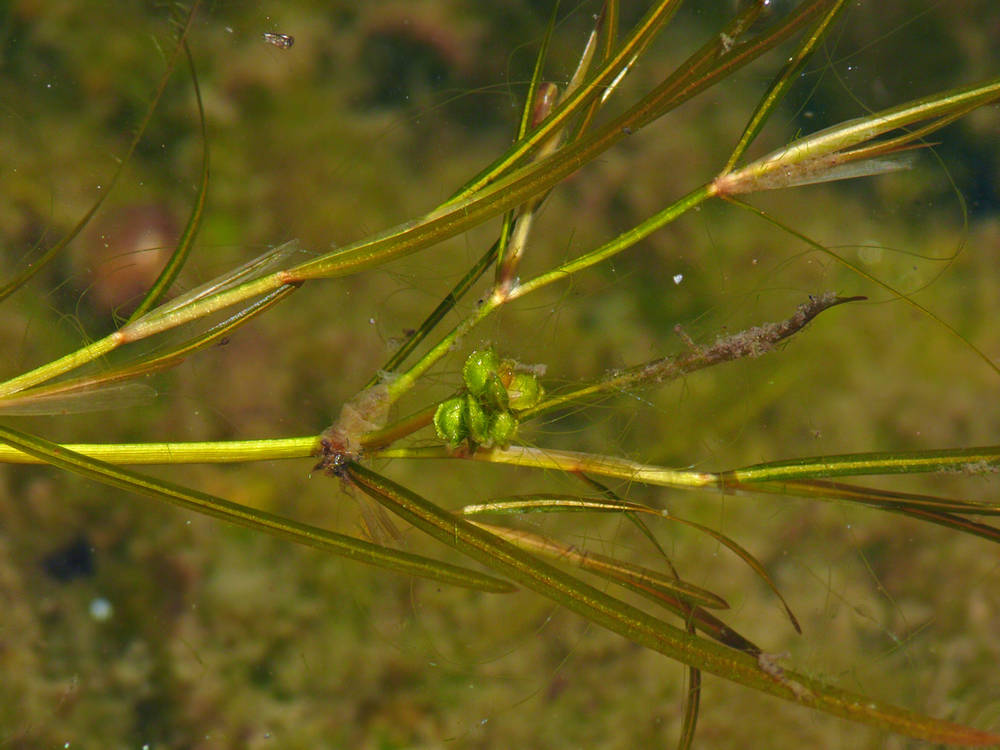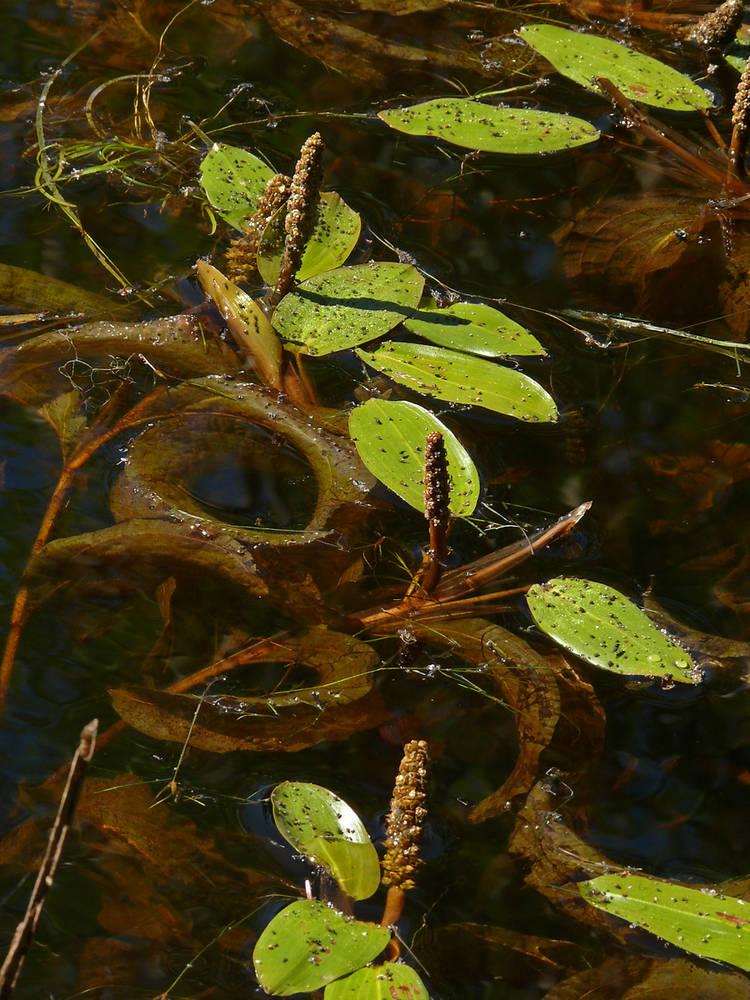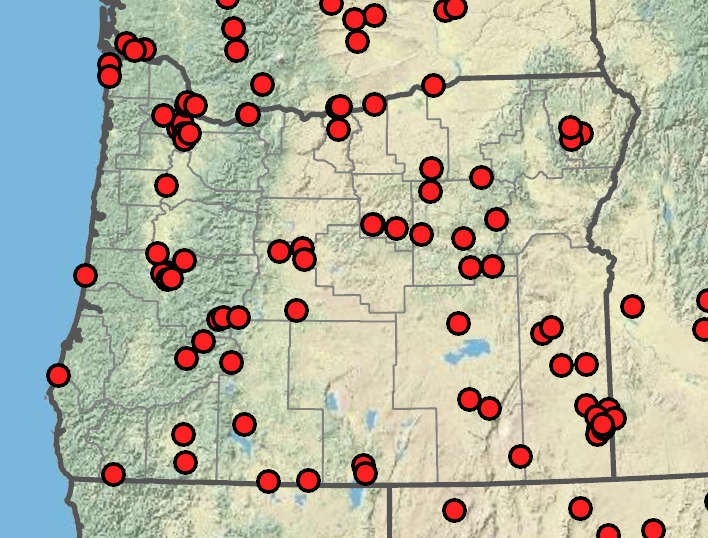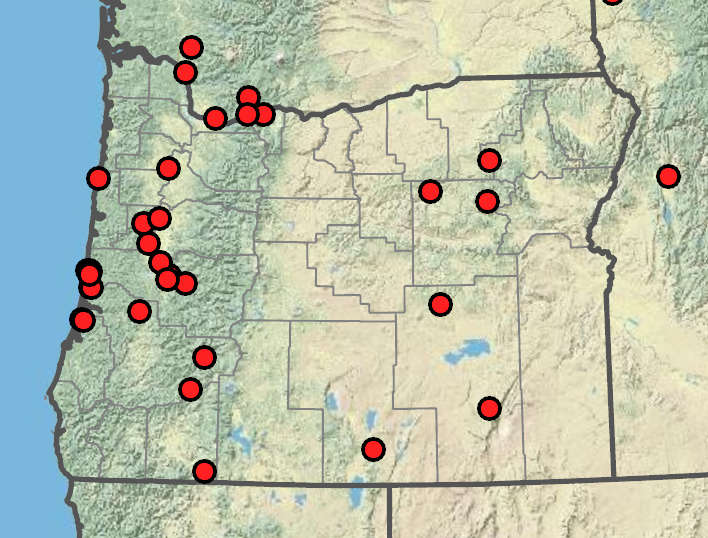Potamogeton foliosus
Potamogeton amplifolius
leafy pondweed
broad-leaved pondweed, large-leaved pondweed
flattened, 4–75 cm; nodal glands rarely present.
terete, 6–110 cm; nodal glands absent.
submersed, sessile, attached to stem nodes, not attached to stipules;
stipules 2–22 mm; greenish to brown, membranous to slightly fibrous;
veins not persisting;
blades linear, 13–82 × 0.3–2.3 mm;
margins entire;
tip acute to apiculate; lacunae rarely present;
veins 1–3(5).
submersed and floating or rarely submersed only.
lanceolate to round elliptic, 43–92 × 25–38 mm, light green;
base rounded to cordate;
tip acute to rounded;
veins 27–49;
petioles 23–226 mm.
petiolate, attached to stem nodes, not attached to stipules;
stipules 15–117 mm;
tip acute;
blades ovate to oblanceolate, distinctly falcate, 50–125 × 15– 58 mm;
base rounded to acute;
margins entire and recurved; wavy;
tip acute to round-apiculate;
veins 19–49;
petioles terete, 0.9–11.5 cm.
emersed;
spikes continuous (rarely interrupted), 1.5–7 mm;
peduncles axillary, recurved, 3–11(37) mm.
emersed;
spikes cylindric, 34–65 mm;
peduncles terminal or axillary; erect, cylindric, 45–223 mm.
sessile; round to obovoid, flattened, 1.5–2.7 × 1.2–2.2 mm; olivegreen to green-brown, dorsally and laterally keeled;
beaks erect, 0.2–0.6 mm.
sessile, obovoid; turgid, 5–6.7 × 4.5–5.2 mm; reddish brown, dorsally keeled, laterally ridged;
beaks erect, 0.5–0.8 mm.
Potamogeton foliosus
Potamogeton amplifolius
Ponds, lakes, and slow or fast-moving streams. 0–2000 m. BR, BW, Col, ECas, Est, Lava, Owy, Sisk, WV. CA, ID, NV, WA; north to AK, east throughout most of Canada and the US, south to Central America. Native.
Potamogeton foliosus is the most common linear-leaved pondweed in North America. The undulating fruit keel distinguishes this species and P. fibrillosus from our other linear-leaved pondweeds. Immature plants usually cannot be distinguished from P. berchtoldii or P. pusillus.
Lakes, ponds, streams. 0–2100m. BR, BW, Casc, CR, ECas, Est, WV. CA, ID, WA; north to British Columbia, east to Newfoundland. Native.
Potamogeton amplifolius has large submersed leaves that are folded and falcate and have numerous veins. This species hybridizes with P. illinoensis.
Nick Otting, Richard Brainerd, Barbara Wilson
Nick Otting, Richard Brainerd, Barbara Wilson
- Local floras:
BC,
CA,
OR,
WA
- Local Web sites:
CalFlora,
CalPhotos,
Flora NW,
PNW Herbaria
WildflowerSearch
iNaturalist (observations)
USDA Plants Database
- LBJ Wildflower Center
- SEINet
- Plants of the World Online
- Encyclopedia of Life
- Wikipedia
- Google Image Search
- Local floras:
BC,
CA,
OR,
WA
- Local Web sites:
CalFlora,
CalPhotos,
Flora NW,
PNW Herbaria
WildflowerSearch
iNaturalist (observations)
USDA Plants Database
- LBJ Wildflower Center
- SEINet
- Plants of the World Online
- Encyclopedia of Life
- Wikipedia
- Google Image Search





